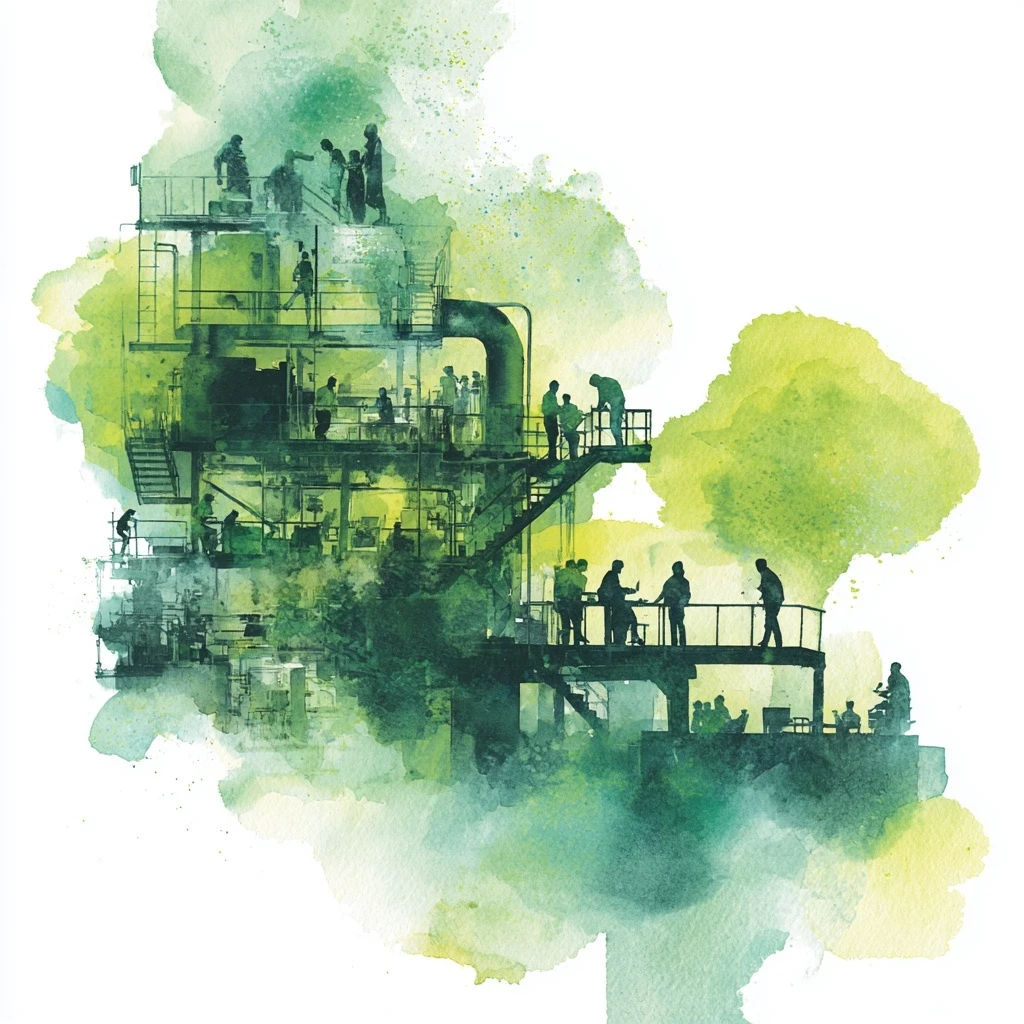
How do SSCs focus on successful service delivery?
What are the critical success factors that go a significant way to achieving the SSC objectives that were set out in the business case and deliver both the tangible and intangible benefits to the organisation it supports?
In my own experience there are four key areas – process, technology, customers and people. Of course, there are many more success factors that could be included such as governance, control & compliance, continuous improvement, customer service, and service delivery itself; however, I believe if the following four areas are achieved, the SSC will be on a strong track to achieve!
Process
It is clear that the journey from fragmented operating procedures to a common approach are key to the success of an SSC. However, before harmonising standard operating procedures the first step should be to simplify how things are done. Frequently inherent processes have too many touch points, include too many approval layers, and have process steps that simply add no value (often, as this is the way it has been done for years). It is imperative that a simplification exercise be adopted before any standardisation takes place. Once the new simplified way of working is recorded, tested and adopted, the opportunity exists to standardise across different business units. Thereafter, when standardised operating processes are stable, further opportunities to optimise the end-to-end activity will emerge.
Process reviews and harmonisation should begin before any automation or new system implementations begin. There is frequently a drive to implement new technology quickly to exploit benefits as soon as possible; however, caution should be applied as an automated ‘sub-optimal process’ may deliver little more than the pre-existing activity.

During the optimise phase of process re-engineering, the continuous improvement approach will need to be realised.
Technology
The ultimate enabler of increased efficiencies and effectiveness has to be best-in-class technology. The advance in technologies continues unabated and we read more and more about artificial intelligence, robotics, digital disruption and alike; however, getting the fundamentals right remains the key driver for fully enabling technology.
The fundamentals within the technology area include:
- User intuitiveness and ease of use – a common workflow that is easy to use for a low volume user; many systems today can be built using the “Amazon look and feel,” which will result in a greater user take-up & improved customer satisfaction
- Self-service – allowing all employees, suppliers and customers to update core details, as well as accessing standard reports, allows SSC to focus on added-value activities
- Automatic & seamless interfaces – automatic uploads and integrated controls between two systems are a key requirement where multiple systems exist
- Master-data – ownership and source of master-data is critical to any system implementation, whether it is the GL string make-up, where customer or supplier data is held, or taxation and currency indicators
- Mobile capacity – ability to access finance systems 24/7remotely via mobiles or tablets
- Plan in detail or repent at leisure – the planning or discovery phase of any system implementation is the single most important project stage; agreeing on scope, go-live approach (big-bang or function by function), target operating model and master data structures are crucial
- Change management – implementation does not guarantee adoption; an engaging & focused training and communication approach, and identifying local change champions, is key
Customers
Engaging with the internal or external stakeholder base, developing long-lasting relationships and building trust and confidence in the SSC’s ability to deliver is a critical success factor in leading a shared services centre.
The customer (or stakeholder) is anyone that is affected by the shared services centre and its operations. Whilst customers can be external (suppliers, customers, HMRC, external audit, etc.), internal customers can include the Executive or senior leadership team, other functional staff supported by the SSC in Finance, HR, IT or Procurement, as well as operational staff and possibly all employees.
It is important to realise that the approach, attitude and maturity of the customer will evolve over time and this is initially dependent upon the support that is received from the top of any organisation. The customer can be supportive and can fully understand the role they need to play in the success of the new organisation and how they can support the SSC moving forward. Equally, the loss of control coupled with new ways of working for the customer can create obstacles to a successful end-to-end process and drive fragmented relationships.
There are several steps to work through in developing a healthy and strong working relationship with the customer base.
- Ensure roles and responsibilities are fully documented and understood across the wider-organisation, including the SSC itself
- Involve the customer in the development of new technology solutions, new processes, SSC strategy and decisions being made; they are the recipient of the service provision and therefore have a stake in the game
- Identifying senior or key influencers who have a keen interest in how the SSC performs is essential. This will usually result in more time and effort being spent with this stakeholder group, but the relationship and understanding should be vastly improved
- Be honest and transparent – there will always be errors and things will not work exactly as planned; re-enforce the facts, highlight the headlines and learn from mistakes as they arise
- Customer surveys – annual customer surveys, which include verbatim from the customer base, are important in re-enforcing the views of the customer and providing feedback to support the SSC plans over the coming year.
Within shared services we continually fight ‘perception and reality’ as for our customer base perception is reality. Continual engagement and listening to voice of the customer whilst developing trust and credibility within the SSC, will go a long way to managing effective and long-lasting relationships.
“No noise” is a regular and key objective for any SSC and, if achieved, will often demonstrate a strong service delivery and a satisfied customer base.
People
Your staff, team and SSC employees remain the single most important asset that any shared services centre can have. Your team members will engage with stakeholders, either in-person, via the telephone, or email – and will go a long way to re-enforcing the reputation of your SSC.
Key focus areas within the ‘people’ area include:
- Attitude – I have long recruited based more around attitude than capability; whilst capability is important (as shown below), it can be trained whereas to change someone’s attitude is far more difficult
- Capability – the ability to do the job is paramount; having the knowledge, skill and experience is a key requirement
- Support – it is crucial that staff members are given a voice; this may come in the form of a monthly one-to-one, a daily huddle or a monthly team meeting; time with the boss is crucial
- Employee engagement – creating the appropriate environment for employees to maintain motivation is crucial. The ongoing ‘high-volume’ demands of an SSC with repetitive and often monotonous transactional activities requires management to frequently re-invent the working environment in order to maximise staff retention. Engagement activities can be as simple as saying ‘thank you’ – through to the provision of agile working
- Learning & Development – many staff within an SSC want to further their personal development and learning; this doesn’t mean each person wants to become the next CFO, however exposure to a different function, professional qualification in their chosen function, something as simple as ‘Excel training’ or as challenging as ‘learning a new language’, can be offered to an SSC team to maximise the efforts of the wider-team. Another good example of L&D within shared services is the opportunity to learn formal ‘continuous improvement’ methodology. Frequently, we expect our teams to drive CI but do not provide them with the skills or approaches to administer improvements
- Provision of a career framework – identifying and communicating the staff grading system, the next step in the career pathway, and the skills and experience required to get there, are key to allowing aspirational staff to clearly identify what future opportunities may exist
- Management – investing in your management team to demonstrate the expectations of a Manager/leader in your SSC are pivotal. What makes a good Manager, what doesn’t make a good Manager, the support that will be provided in developing them and the wider SSC, are key to the successful development and delivery of the wider shared services centre.























